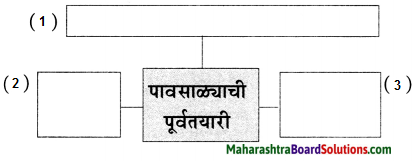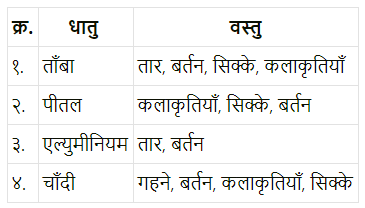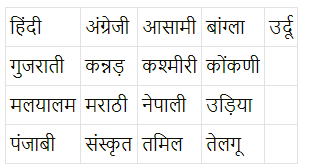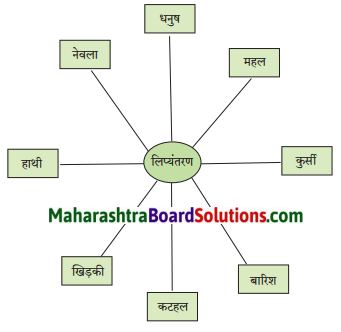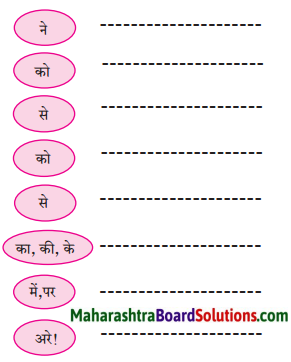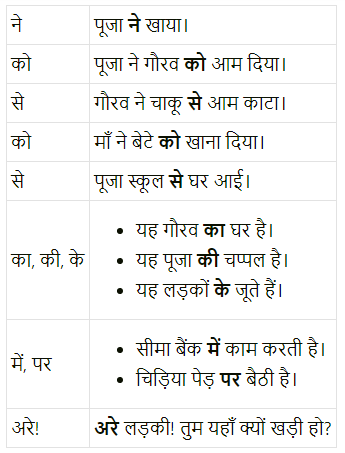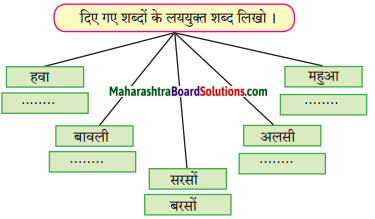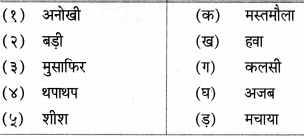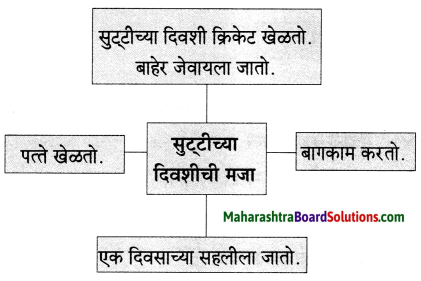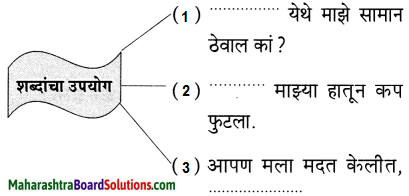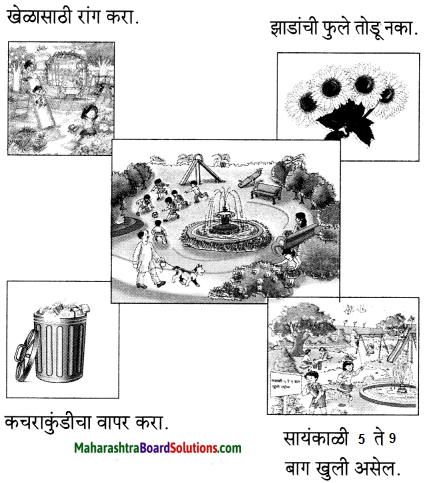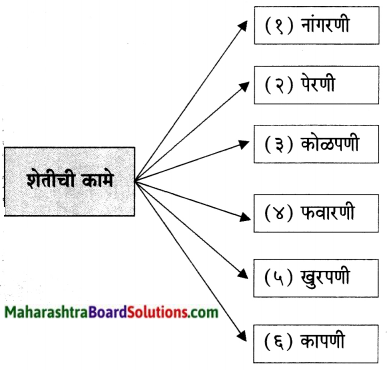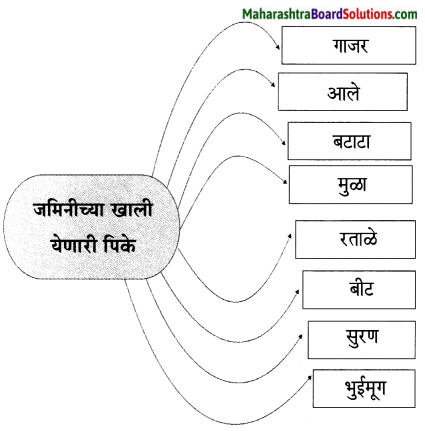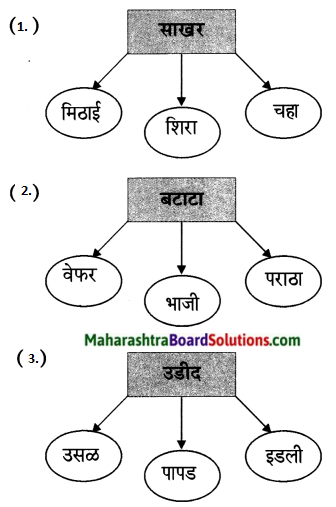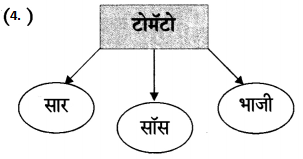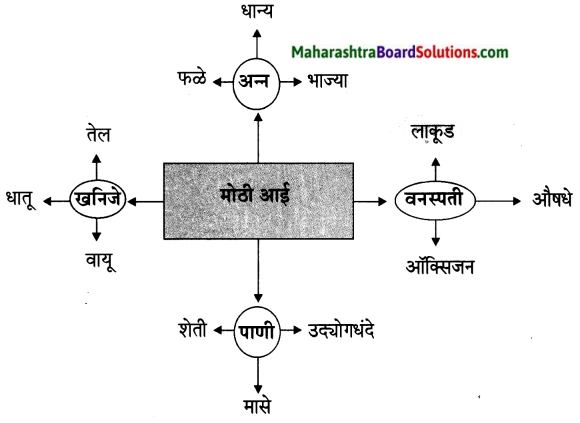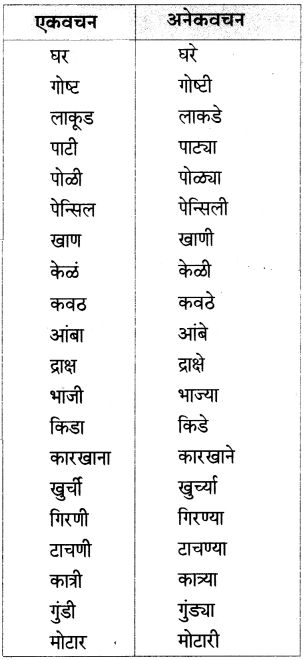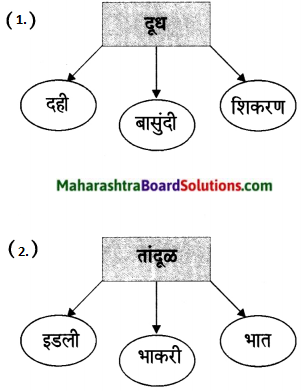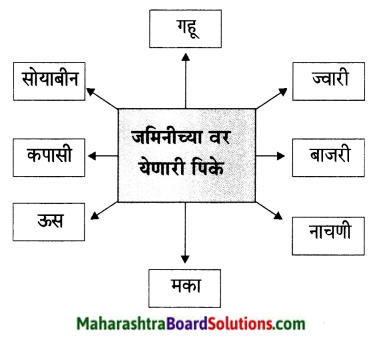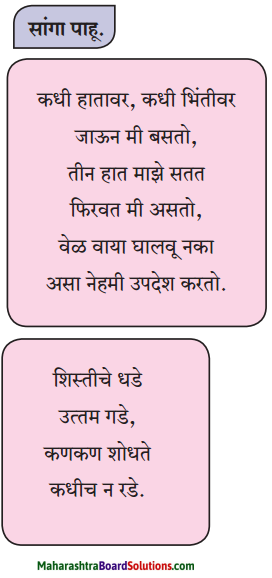Balbharti Maharashtra State Board Class 6 Hindi Solutions Sulabhbharati Chapter 4 जोकर Notes, Textbook Exercise Important Questions and Answers.
Maharashtra State Board Class 6 Hindi Solutions Chapter 4 जोकर
Hindi Sulabhbharti Class 6 Solutions Chapter 4 जोकर Textbook Questions and Answers
किन्हीं पाँच मुहावरों / कहावतों के सांकेतिक चित्र बनाओ: जैसे

मैंने समझा:
Answer:
प्रस्तुत पाठ में मैंने सीखा कि अपनी बातों को प्रभावी ढंग से कम-से-कम शब्दों में व्यक्त करने के लिए मुहावरों और कहावतों का प्रयोग किया जाता है।
![]()
खोजबीन:
निम्नलिखित शब्द को लेकर चार मुहावरे लिखो।

Answer:
हाथ
१. हाथ का मैल होना
२. हाथ तंग होना
३. हाथ धोना
४. हाथ पर हाथ धरे बैठना
स्वयं अध्ययन:
अब पछताए होत क्या, जब चिड़िया चुग गई खेत’ पर आधारित कोई कहानी सुनाओ।
Answer:
चींटी और टिड्डा दोनों पड़ोसी थे। चींटी बहुत मेहनती थी। वह दिनभर मेहनत करती थी। वह अपने भविष्य के लिए भी अनाज इकट्ठा करती रहती थी। वहीं टिड्डा सिर्फ पेट भरने तक का भोजन जुटाकर दिनभर खेलता-कूदता, नाचता-गाता था। कुछ दिनों बाद बरसात का मौसम आया। टिड्डे को । कहीं भी भोजन नहीं मिल पा रहा था, जबकि चींटी आराम से घर में बैठकर बरसात का आनंद ले रही थी। चींटी को देखकर टिड्डे को यह भी समझ में आ गया कि उसने पूरे साल आराम करके गलती की, लेकिन ‘अब पछताए होत क्या, जब चिड़िया चुग गई खेत।’
![]()
जरा सोचो ………. बताओ:
यदि साइकिल तुमसे बोलने लगी तो ……
Answer:
यदि साइकिल मुझसे बोलने लगी तो मुझे बहुत खुशी होगी। मैं उससे अपने मन की सारी बातें कहता और वह भी मुझे अपनी सारी बातें बताती।। हम दोनों आपस में बहुत बातें करते। मैं उसे अपनी सबसे अच्छी दोस्त बना लेता और वह बिना मेहनत किए मुझे मेरी मनचाही जगह पर ले जाती। यदि साइकिल मुझसे बोलने लगी, तो मैं उसके सारे दुख-दर्द भी पूगा। सब उस पर सवार होते हैं, उसपर सामान रखते हैं, तो उसे कैसा महसूस होता है? मैं उसकी नजर से दिखने वाली दुनिया के बारे में जानना चाहूँगा। साइकिल जिन-जिन स्थानों का भ्रमण कर चुकी होगी, उन सभी स्थानों के बारे में भी जानकारी लूँगा। यदि साइकिल मुझसे बोलने लगी, तो मैं उसके इतिहास के बारे में जानना चाहूँगा। उसका जन्म कब, कैसे और कहाँ हुआ? इन सबकी जानकारी लूँगा। उससे पूछंगा कि वह पहले किस तरह दिखती थी? उसे पहले यह दुनिया कैसी लगती थी और अब कैसी लगती है? उसकी हालत में कैसे बदलाव आया? साइकिल से ढेर सारी बातें करके उसे अपनेपन का विश्वास दिलाऊँगा तथा उसकी हालत को बेहतर-सेबेहतर बनाने का प्रयत्न करूँगा।
![]()
विचार मंथन:
गागर में सागर भरना
Answer:
‘गागर में सागर भरना’ यह एक मुहावरा है। इस मुहावरे का अर्थ है – कम शब्दों में बहुत कुछ कहना। इस मुहावरे को एक उदाहरण द्वारा समझते हैं – कबीरदास ने अपने दोहों के जरिए गागर में सागर भर दिया।
सदैव ध्यान में रखो:
हमें सदैव प्रसन्न रहना चाहिए।
Answer:
हास्य का मतलब होता है हँसना। हँसना स्वास्थ्य के लिए बहुत लाभदायक है। हँसने से रक्त संचार बढ़ता है। हँसने से चेहरे की माँसपेशियों का भी व्यायाम होता है। इससे दिमाग भी स्वस्थ रहता है। यूँ कहा जा सकता है कि हँसना स्वास्थ्य के लिए बहुत गुणकारी है, इसलिए हमें हँसते रहना चाहिए।
समझो हमें:
चित्र की सहायता से बारहखड़ी के शब्द बनाकर लिखो।





